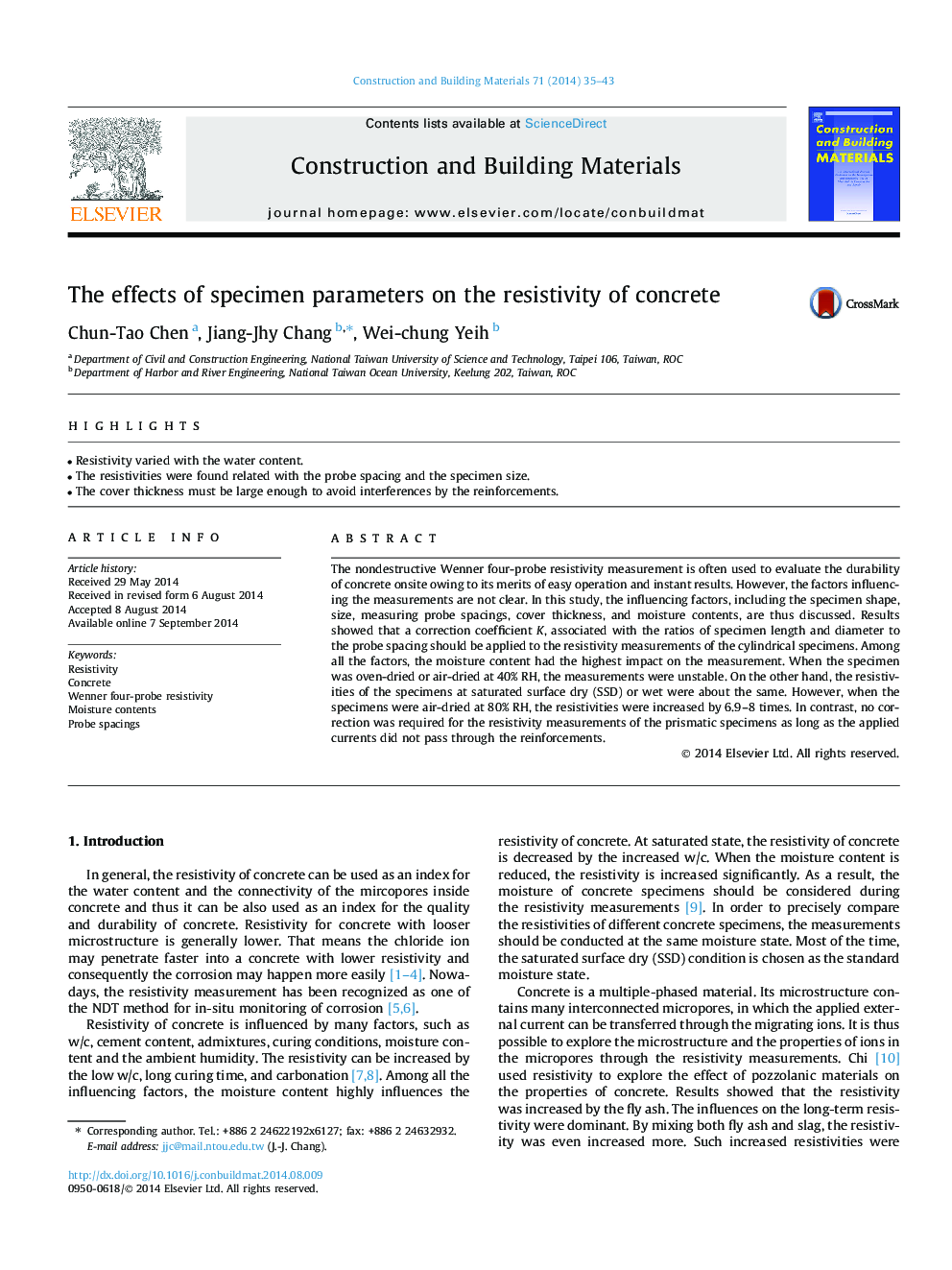| Article ID | Journal | Published Year | Pages | File Type |
|---|---|---|---|---|
| 257265 | Construction and Building Materials | 2014 | 9 Pages |
•Resistivity varied with the water content.•The resistivities were found related with the probe spacing and the specimen size.•The cover thickness must be large enough to avoid interferences by the reinforcements.
The nondestructive Wenner four-probe resistivity measurement is often used to evaluate the durability of concrete onsite owing to its merits of easy operation and instant results. However, the factors influencing the measurements are not clear. In this study, the influencing factors, including the specimen shape, size, measuring probe spacings, cover thickness, and moisture contents, are thus discussed. Results showed that a correction coefficient K, associated with the ratios of specimen length and diameter to the probe spacing should be applied to the resistivity measurements of the cylindrical specimens. Among all the factors, the moisture content had the highest impact on the measurement. When the specimen was oven-dried or air-dried at 40% RH, the measurements were unstable. On the other hand, the resistivities of the specimens at saturated surface dry (SSD) or wet were about the same. However, when the specimens were air-dried at 80% RH, the resistivities were increased by 6.9–8 times. In contrast, no correction was required for the resistivity measurements of the prismatic specimens as long as the applied currents did not pass through the reinforcements.
